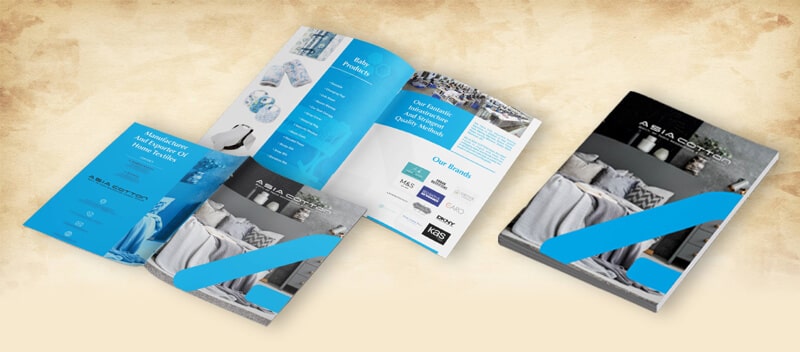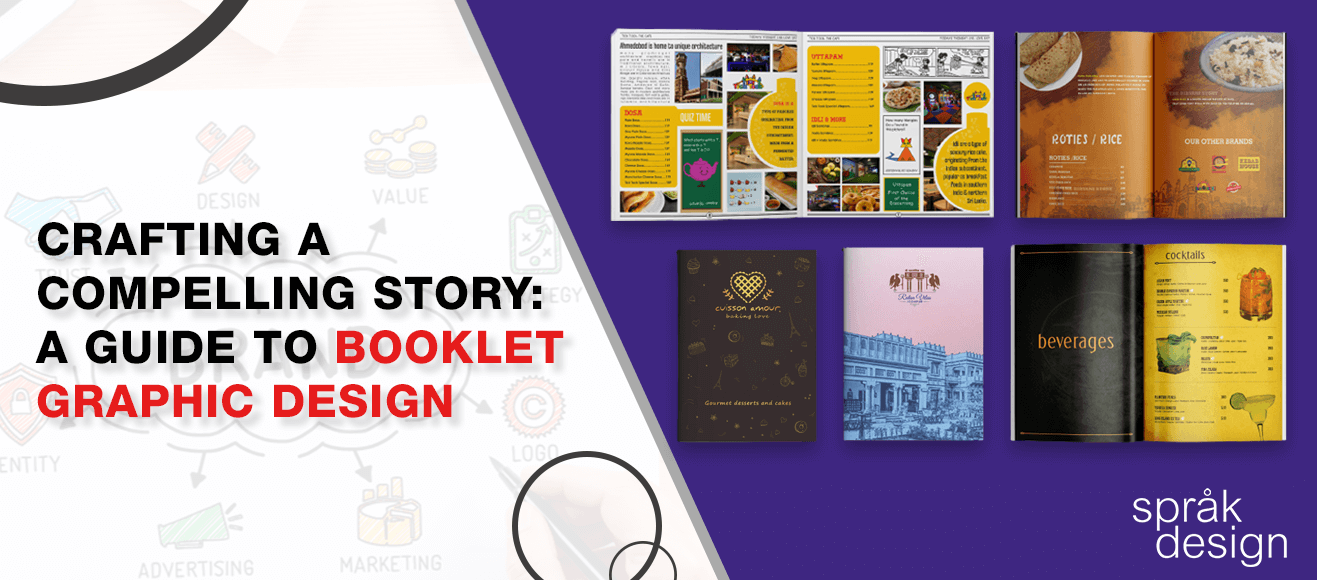Crafting A Compelling Story: A Guide to Booklet Graphic Design
Last Update : 24 February 2023
Booklets, brochures, and catalogs are powerful marketing tools that can help you tell your brand’s story in a compelling and engaging way.
Effective booklet graphic design is critical to the success of these materials, as it helps to communicate your message effectively and efficiently.
This guide is designed to help you craft a compelling story through effective booklet graphic design and booklet layout design. We’ll start by looking at how to understand your audience and define your message, followed by tips on choosing the right format and selecting visual elements.
You’ll also learn how to build a cohesive design and fine-tune your booklet for maximum impact. By the end of this guide, you’ll have a better understanding of how to create a booklet that effectively communicates your brand’s story.
What Is A Booklet?
Booklet graphic design is the art of creating a document that serves as a storytelling medium. A booklet can be used to promote a product, provide information, or simply entertain readers.
It usually consists of multiple pages bound together in a single book form, with a cover page and back page for branding.
Booklets can range from large, full-color publications to small, pocket-sized publications. The design and layout of a booklet are key to its success; it should be attractive, engaging, and provide a compelling story to the reader.
Design elements such as typography, color, imagery, and page layout should all be considered when crafting a booklet. With careful planning and attention to detail, a booklet can become an effective marketing tool.
The Role Of Booklet Graphic Design In Storytelling
Booklet graphic design plays a critical role in storytelling because it helps to visually communicate your brand’s message and engage your audience. A well-designed booklet can capture the attention of your audience, and help to convey complex information in an easy-to-digest format.
Through the use of visual elements such as images, typography, and color, booklet design can help to evoke emotions, provide context, and bring your story to life.
By telling a compelling story through booklet design, you can effectively communicate your brand’s unique value proposition and engage your audience on a deeper level.
This can help to build a connection with your audience and encourage them to take action, whether it’s to purchase a product, sign up for a service, or simply learn more about your brand.
In addition, a well-designed booklet can also help to establish your brand’s credibility and establish it as a thought leader in your industry. By presenting information in a visually appealing and professional manner, you can demonstrate your expertise and commitment to quality.
How To Understand Your Audience And Define Your Message

Understanding your audience is the first step in crafting a compelling story through booklet graphic design. This means identifying your target audience demographic and understanding their preferences, motivations, and pain points.
This information will help you determine the tone and style of your booklet, as well as the type of content that will resonate most with your audience.
Defining your message is equally important. This means clearly articulating the key message you want to convey through your booklet, and ensuring that all elements of the design support that message. Avoid message dilution by keeping your design simple and focused, and make sure that your message comes through loud and clear.
To define your message, ask yourself what you want your audience to learn or feel after reading your booklet. Consider your brand’s unique value proposition and what sets you apart from your competitors. This information will serve as the foundation for your message and will guide the rest of your booklet design.
By understanding your audience and defining your message, you can ensure that your booklet effectively communicates your brand’s story and resonates with your target audience.
Tips On Choosing The Right Format And Selecting Visual Elements
Choosing the right format for your booklet is important because it can affect the way your message is received by your audience.
There are several formats to choose from, including brochures, booklets, and catalogs, each with its own strengths and weaknesses.
Consider factors such as the amount of information you want to convey, the tone of your message, and the purpose of the booklet when choosing a format.
When selecting visual elements, it’s important to consider the role they play in reinforcing your message. Images can be particularly powerful in this regard, as they can help to convey emotions, provide context, and engage your audience on a deeper level.
Choose images that are high quality and relevant to your message, and consider the impact that color and typography have on your design.
When choosing a color palette, consider the mood and tone you want to convey, as well as your brand’s color scheme. Use typography to create hierarchy and interest, and choose typefaces that complement your message and visual style.
By carefully choosing the right format and selecting the right visual elements, you can create a booklet that is both aesthetically pleasing and effective in communicating your message.
How To Create An Engaging And Visually Appealing Booklet

Creating an engaging and visually appealing booklet requires careful consideration of several key elements. Here are some tips for designing an effective booklet:
1. Purpose
Clearly define the purpose of the booklet and determine the target audience. This will help you make decisions about the tone, content, and style of the design.
2. Layout
Choose a booklet layout design that is easy to read and follows a clear structure. To break up material and make it easier to skim, use headings, subheadings, and bullet points.
3. Typography
Choose a font that is easy to read and appropriate for the tone of the booklet. Make sure the font size is large enough to be easily read and use a consistent font style throughout the booklet.
4. Images
Use high-quality images that are relevant to the content of the booklet. Avoid overloading the design with too many images, as this can detract from the text.
5. Color
Use color carefully to add visual interest and help to reinforce the message of the booklet. Choose a color palette that is appropriate for the subject and tone of the booklet.
6. Balance
Use design principles, such as balance, contrast, and emphasis, to create a visually appealing and engaging layout.
7. Consistency
Maintain a consistent design style throughout the booklet to reinforce the message and create a sense of unity.
8. Proofreading
Proofread the content of the booklet carefully to ensure accuracy and clarity. This will help to avoid errors and improve the overall quality of the booklet.
Conclusion
Sprak Design has been providing booklet design services for over 10+ years. Graphic design plays an important role in the success of a booklet and is a crucial component of telling a story that resonates with the reader. A well-designed layout can help draw attention, capture the reader’s interest, and evoke emotion.
When creating your booklet, think about how best to incorporate design elements such as color, typography, images, page layout, and structure into the overall composition.
Consider how each element interacts with one another and how they can all contribute to crafting a compelling narrative.
Pay close attention to any applicable guidelines when it comes to designing booklets; this will save you time and prevent any possible missteps down the road. Lastly, always remember that design should never overwhelm or detract from the content itself.
It should instead aid in creating an experience that captivates and enthralls readers. With these considerations in mind, you’ll be sure to create a beautiful booklet that communicates your message effectively!
Through careful planning and strategic design, your booklet will be impactful and memorable for years to come. By applying the tips provided in this guide to your booklet layout design, you can ensure that your story will reach its full potential.


